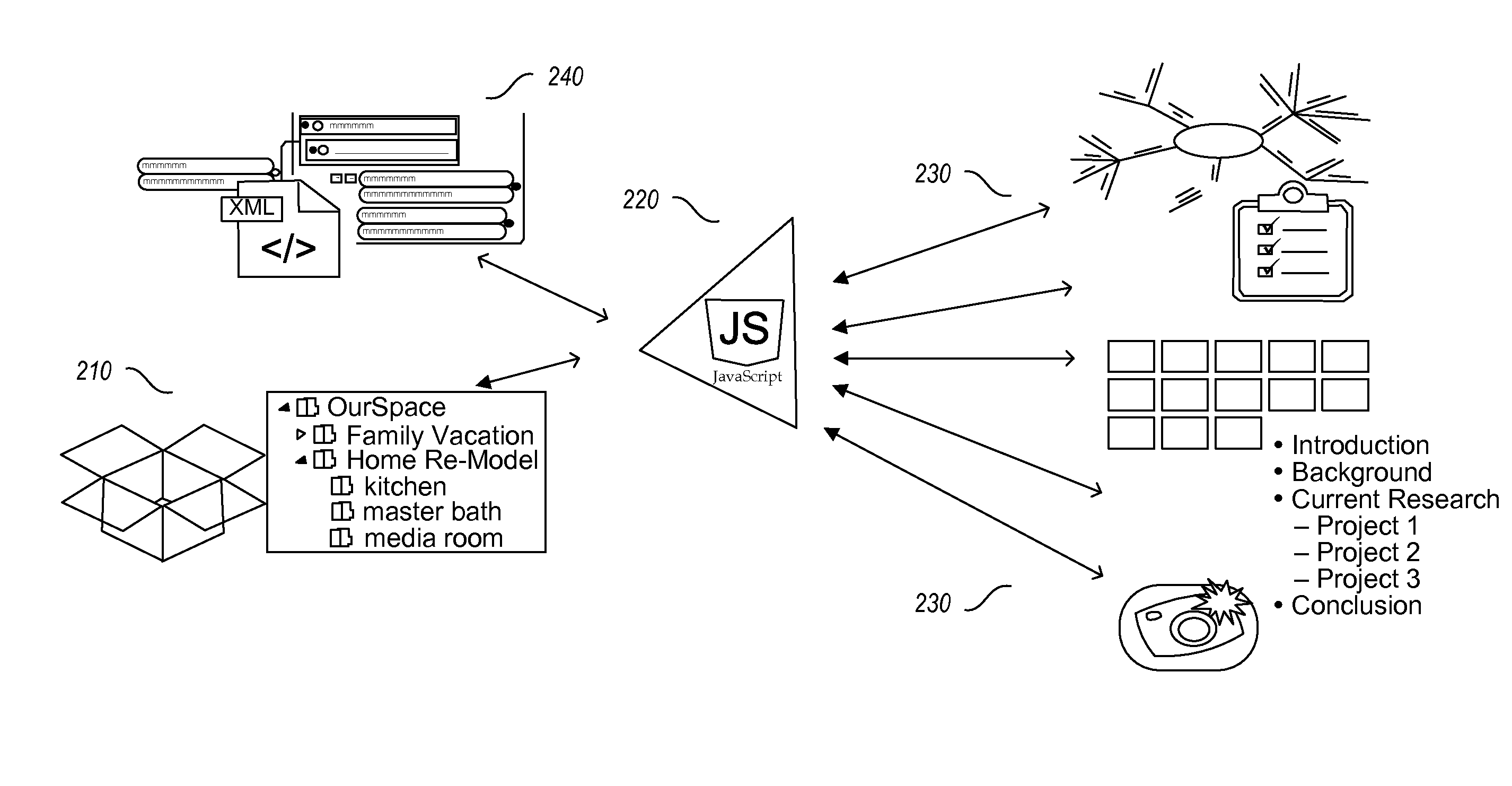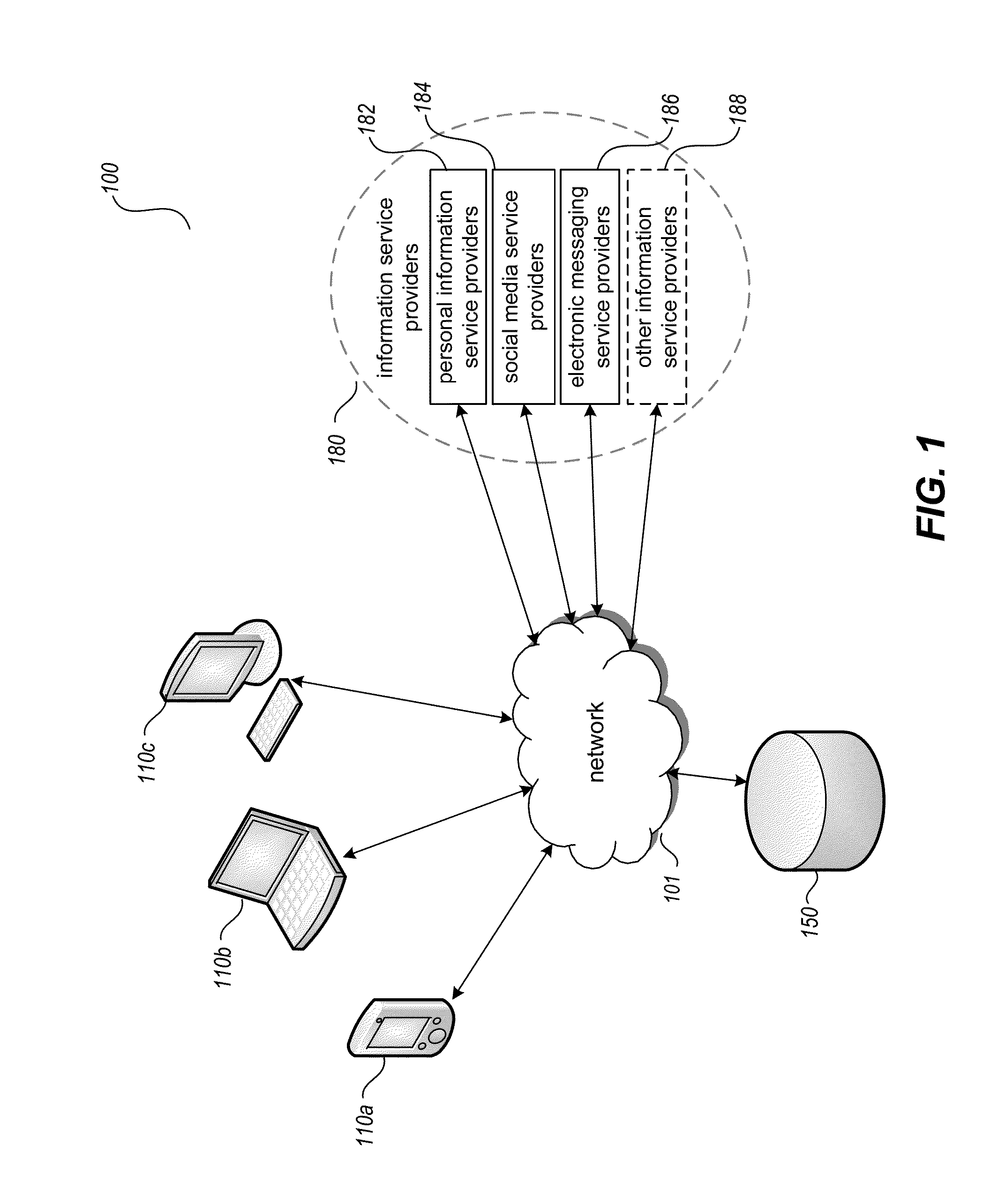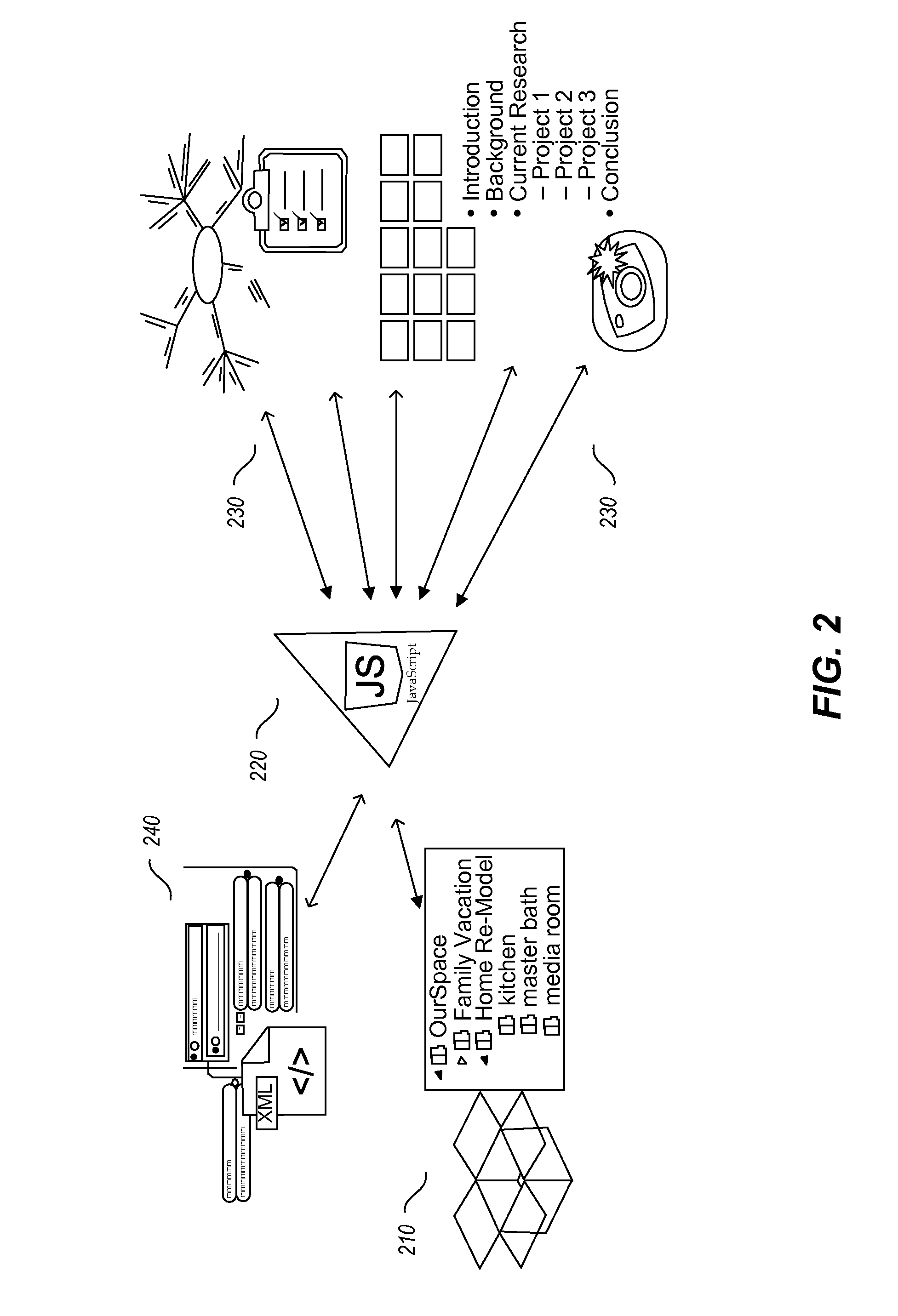Aggregated information access and control using a personal unifying taxonomy
a taxonomy and information access technology, applied in the field of aggregated information access and control, can solve the problems of difficult for the user to cohesively and coherently view all of her family photographs, the limited manner in which those photographs may be viewed, and the compounding of problems
- Summary
- Abstract
- Description
- Claims
- Application Information
AI Technical Summary
Benefits of technology
Problems solved by technology
Method used
Image
Examples
Embodiment Construction
[0013]A method for associating metadata with grouping items (defined / explained below) is described. Metadata is represented using XML (eXtensible Markup Language) according to a Xooml schema (described elsewhere herein). One or more fragments of metadata can be associated with any given grouping item. A XooML metadata fragment can be shared by any number of applications from any number of devices. Each application can persist its own application-specific metadata within a XooML fragment where such metadata co-resides with the metadata of other applications. In addition, applications can view, modify and make common use of the application-independent structure of a grouping item. Applications can also make common use of metadata standards (such as Dublin Core or iCalendar).
[0014]Applications, can, by using XooML metadata e.g., as supported through itemMirror (described below), work together through simple use by an end user but without central coordination or any effort at pairwise c...
PUM
 Login to View More
Login to View More Abstract
Description
Claims
Application Information
 Login to View More
Login to View More - R&D
- Intellectual Property
- Life Sciences
- Materials
- Tech Scout
- Unparalleled Data Quality
- Higher Quality Content
- 60% Fewer Hallucinations
Browse by: Latest US Patents, China's latest patents, Technical Efficacy Thesaurus, Application Domain, Technology Topic, Popular Technical Reports.
© 2025 PatSnap. All rights reserved.Legal|Privacy policy|Modern Slavery Act Transparency Statement|Sitemap|About US| Contact US: help@patsnap.com



